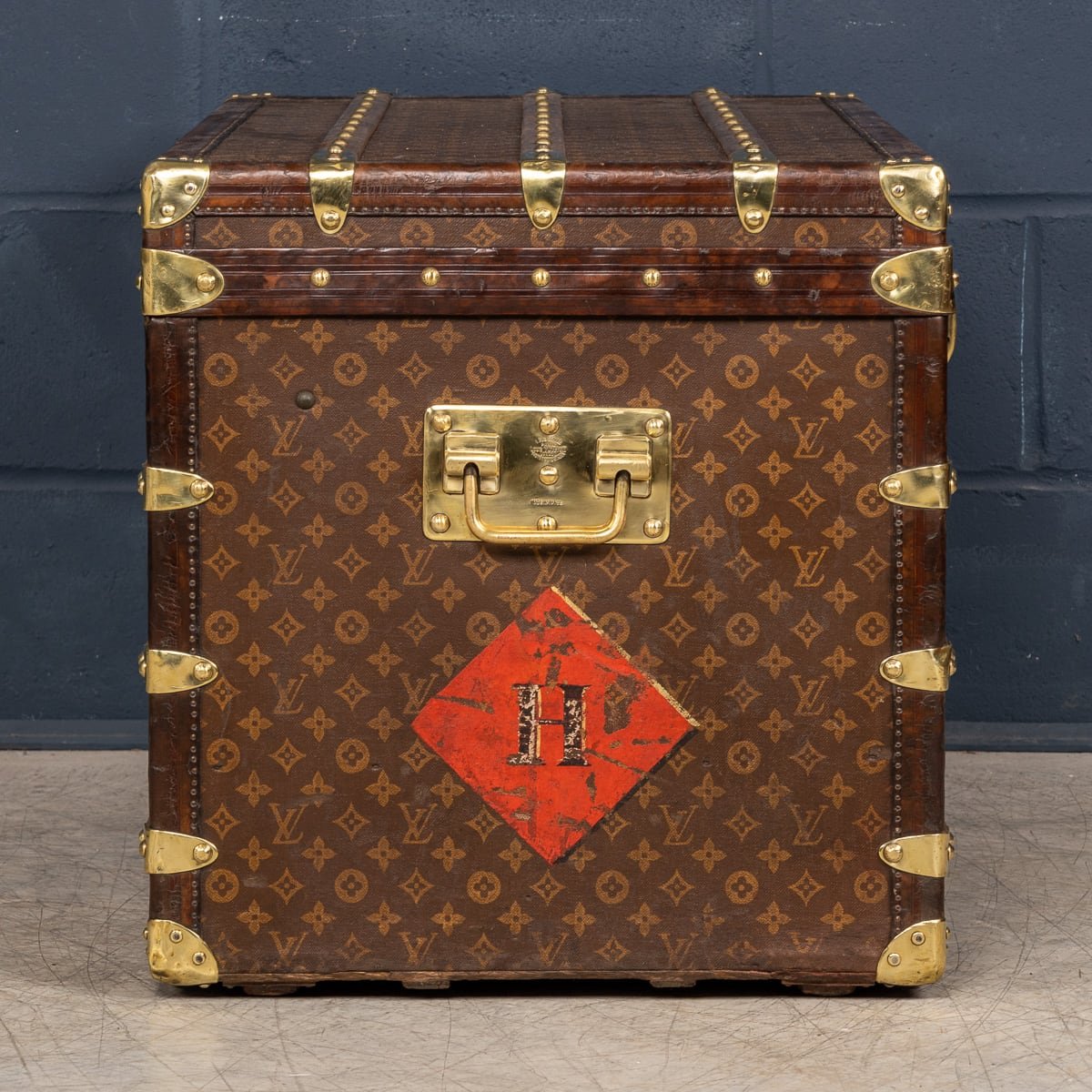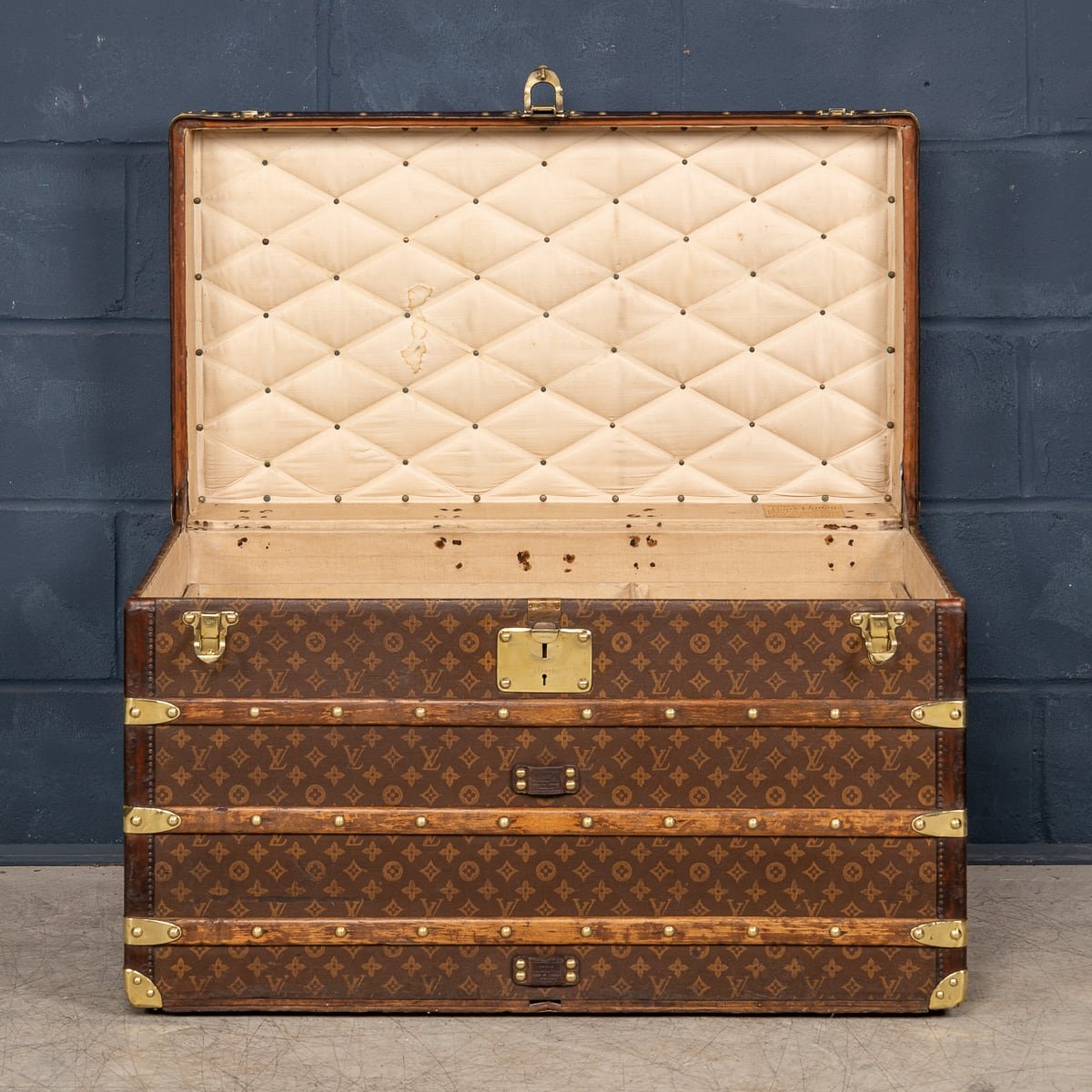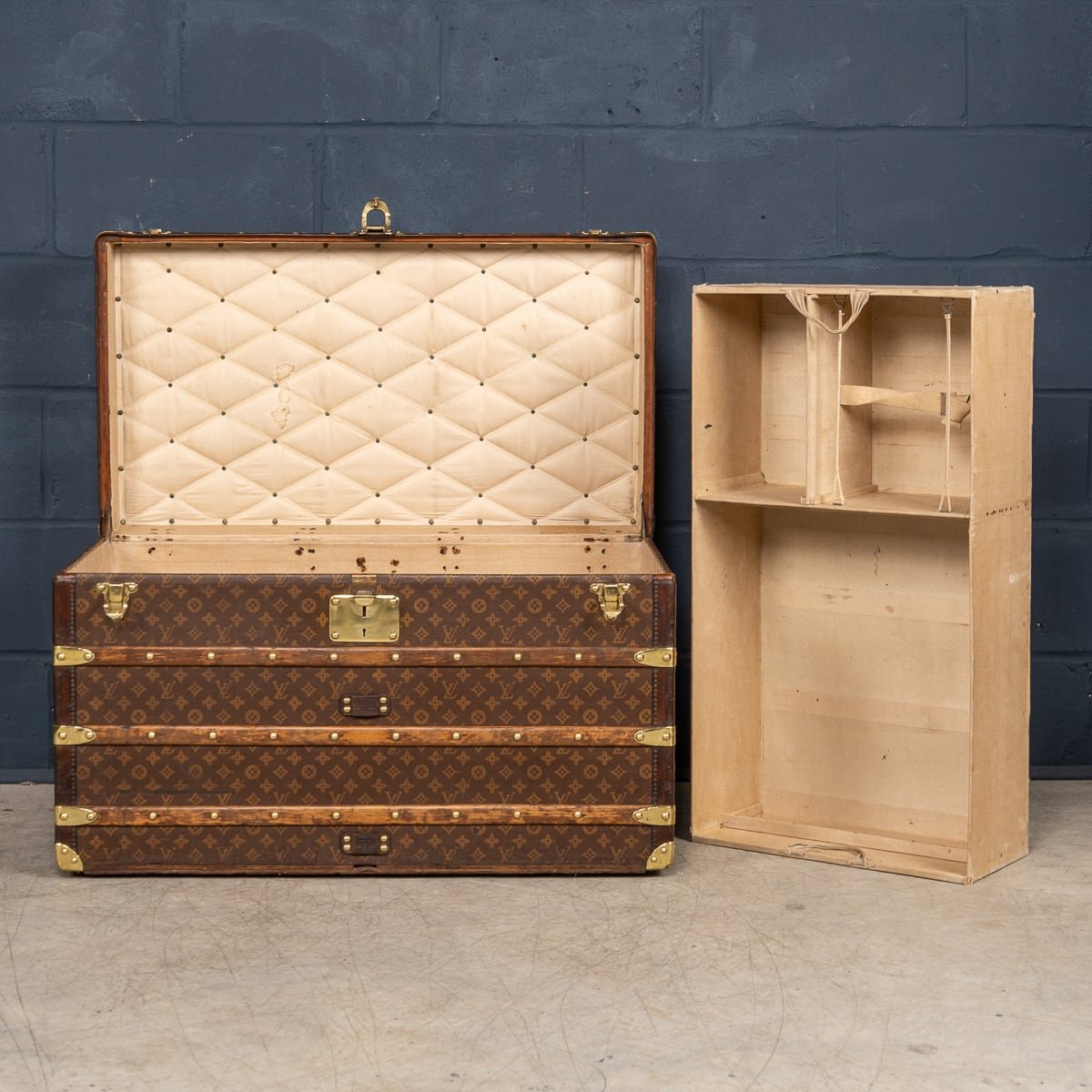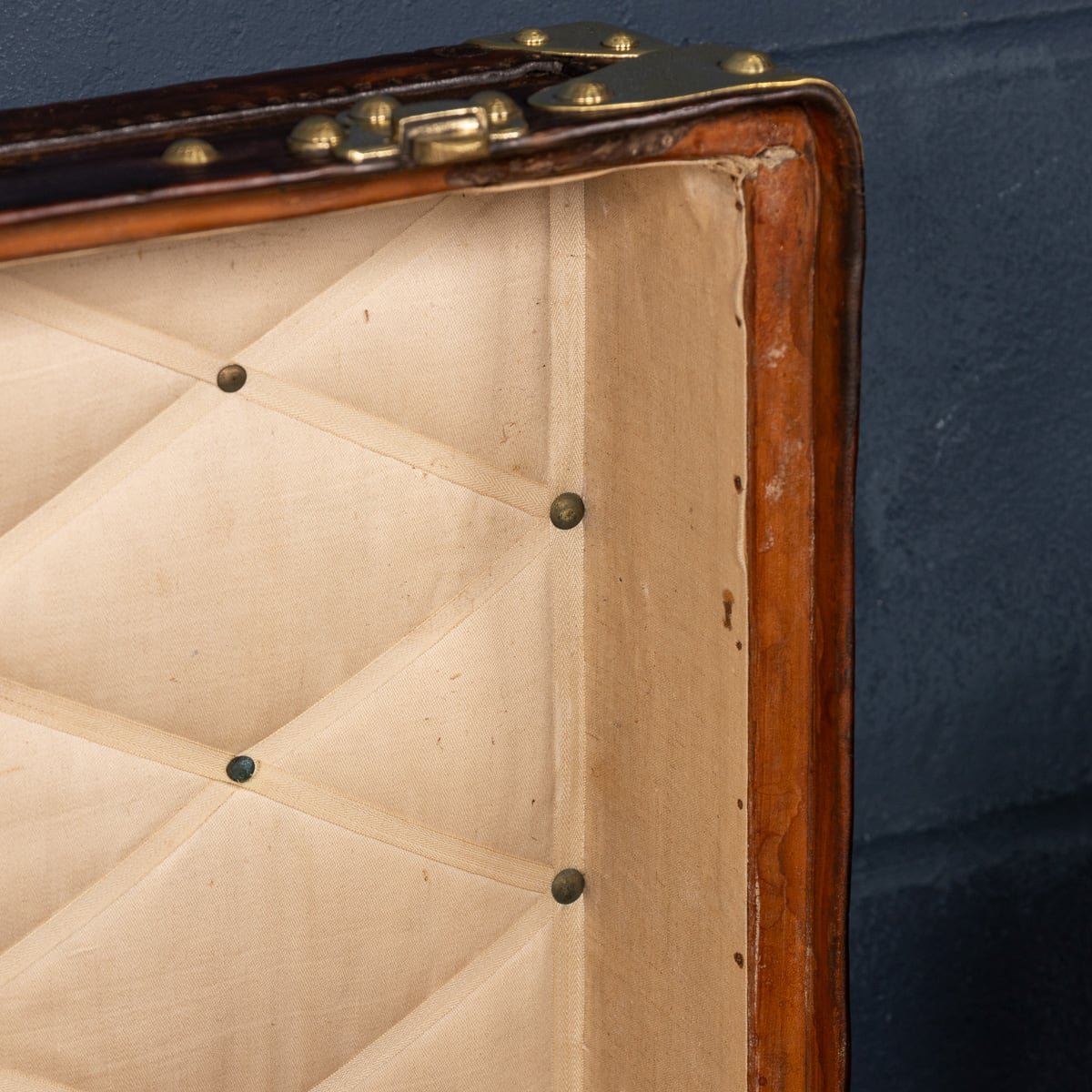A Louis Vuitton courier trunk, France, circa 1920
A Louis Vuitton courier trunk, France, circa 1920
Around the turn of the 19th and 20th century Louis Vuitton had established himself as a market leader in trunk making and needed to set his now famous brand apart from the imitators and competitors. They decided to come up with a logo, a monogram, which was indeed the famous and very recognisable print we are so familiar with today.
This example is a Louis Vuitton trunk that dates to around 1920. It is covered in the world famous LV monogrammed canvas, with its leather borders and brass fittings this trunk would have been the top of the line even at the time of purchase over 100 years ago. A fantastic conversation piece, a great size for a coffee table or just as a standalone item suitable for any interior, both modern or traditional.
A brief history about Louis Vuitton trunks: Louis Vuitton was born in 1821 to a farmer and milliner and came from a long-established working-class family in eastern France. Vuitton grew up understanding the effects of perseverance and a strong work ethic from watching his family. At the age of 16, he made the decision to walk 292 miles from his hometown to Paris to try and make a new life for himself. When he arrived the city was in the midst of industrialization with current modes of transportation evolving quickly allowing for longer journeys. With this came the need for sturdy travel pieces. Vuitton was taken as an apprentice for a successful box maker and packer named Monsieur Marechal. He learned to craft durable containers and how to pack them properly – a well-respected profession at the time.
In 1854, years after he had mastered his craft and became well respected for it, Vuitton ventured out on his own to open a shop on Rue Neuve des Capucines. It was here that he began to establish himself as a luggage maker. Then, in 1858, Vuitton designed the first Louis Vuitton steamer trunk. At the time trunks had rounded tops to allow for water to run off but this did not allow for convenient stowage. Vuitton introduced a flat, yet waterproof, trunk that was easily stackable. The first of his trunks were outfitted with a grey canvas referred to as Trianon – it wouldn’t be until several decades later that the signature monogram would be introduced. With a burgeoning business, Vuitton moved his family and workplace to Asniere, where he employed twenty workers to craft his trunks. By 1900 he would have 100 employees, and in 1914 the company would more than double in size. After years of success, Vuitton began to experiment with the design of his luggage by introducing a new striped canvas pattern (1876) and later the still well-known Damier print (1888). The hand-painted patterns were developed to prevent counterfeits. Even in the late 1800s, Louis Vuitton was enough of a status symbol to warrant counterfeiting. In 1886, his son George invented and patented an ingenious locking system that made it impossible to pick the lock of their trunks. This lock is still used today. 1892 would prove to be a time of mourning for the family as Louis Vuitton passed away at the age of 70. His son, Georges Vuitton, became the new head of the luxury house. Louis Vuitton’s passing would prompt his son to once again change the print of their luggage, and in 1896, to honour his father, the signature LV monogram was introduced and patterned with LVs, quatrefoils, and flowers. Under his direction success followed and the iconic monogram rose to fame among elite clientele.
Condition: overall excellent vintage condition. Lacking key and one interior tray possibly. Please refer to photographs.
Dimensions: 90cm wide, 54cm high, 51cm deep
For additional information please contact us:
Email: info@alessiolorenzi.com
Phone: +44 7701 088 288
REFERENCE: F2418d































